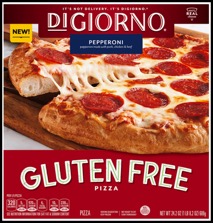Wheat Starch Info Round Up

You’ll need a variety of facts to make an informed decision to determine if wheat starch is right for you. I’ve gathered up some information from trusted resources to help you understand.
Wheat starch has been used in gluten-free products for decades - in some parts of the world - but not here in the USA.
Elaine Hartsook, dietitian and original founder of the Gluten Intolerance Group, approached Ener-G Foods about their Low Protein bread. According “Our Story” on Ener-G’s website, “Elaine Hartsook, R.D., whom I hadn’t previously met, came into the office and complained that we were “killing” her patients with our wheat starch bread.” Elaine discovered that celiac patients were purchasing and consuming this Low Protein bread developed for dialysis patients. Ener-G reports this bread probably contained less than 20 parts per million of gluten. Dr. Cyrus Rubin, inventor of the Rubin Biopsy Tube and professor of Gastroenterology at the University of Washington and his dietitian - yep - Elaine Hartsook met with Ener-G and asked them to develop a gluten-free bread without using wheat starch. By 1978, Ener-G created probably one of the first (only?), commercially available gluten-free breads.
Things to know about wheat starch:
- Wheat starch IS allowed to be included in foods labeled gluten-free as long as the final product contains less than 20 parts per million.
- The FDA considers it an ingredient processed to remove gluten.
- The FDA states: “Wheat starch, when properly manufactured, does not involve hydrolysis of the gluten and can be protein-free.
- A 2014 study out of Germany - Wheat starch has been shown to contain a wide range of gluten: from less than 5 parts per million to over 10,000 parts per million - depending on the processing.
Information about Wheat Starch
Excerpts from “3 Tips for Gluten-Free Label Reading”A product that is labeled gluten-free may include the term “wheat” in the ingredient list (such as “wheat starch”) or in a separate “Contains wheat” statement, but the label must also include the following statement: “The wheat has been processed to allow this food to meet the Food and Drug Administration (FDA) requirements for gluten-free foods
If “wheat starch” is an ingredient in a GFCO–certified product, the wheat has been processed to such an extent that the food meets the GFCO standard of 10 ppm or less gluten.
About Wheat Starch
Someone allergic to wheat should avoid wheat starch. For someone avoiding gluten, wheat starch could contain gluten unless it is in a product that is certified or labeled gluten-free. In that case, the gluten in wheat starch has been processed out. As long as the product is certified or labeled gluten-free, it is safe for someone avoiding gluten.
Anytime information is needed, you folks know that I’m going to include Tricia Thompson, MS, RD. Without further ado…
Tricia Thompson, MS, RD of Gluten-Free Watchdog
Excerpts from “Does Wheat Starch Belong in a Gluten-Free Diet?”
May 2017Wheat starch is not wheat grain and it is not wheat protein. It is not intended to contain any gluten. BUT it is very difficult to completely separate the starch and protein components of wheat so small amounts of gluten remain in the wheat starch. Not all wheat starch is created equal. Depending on the extent of processing wheat starch will contain varying amounts of residual gluten.
In 2008 I wrote the following on wheat starch (from the Gluten Free Nutrition Guide, McGraw Hill):
“… If a manufacturer of wheat starch or products containing wheat starch demonstrates through testing that its products contain less than 20 parts per million of gluten, then in theory I support their consumption by people with celiac disease.”BUT more is known today about testing wheat starch for gluten than was known 10 years ago
Updated opinion on wheat starch…
Because of the current limitations associated with testing wheat starch for gluten, it is the opinion of Gluten Free Watchdog that products containing wheat starch are best avoided by individuals with celiac disease.
That said, if you have celiac disease or another gluten-related disorder and you would like to eat wheat-starch based foods, it is the recommendation of Gluten Free Watchdog that you do the following:
Eat foods containing wheat starch only if the product is labeled gluten-free.
Establish with the manufacturer that the final product is tested using both a sandwich and competitive ELISA.
An interesting article was published by Van Waffle on GlutenFreeLiving.com in February 2015. Van’s article offers a good bit of history and background information on wheat starch. Included in the article are the thoughts and advice of a number of trusted experts in the gluten-free community. You’ll notice different perspectives on this ingredient.
GlutenFreeLiving.com • Van WaffleExcerpts from “The New Word on Wheat Starch”February 2015Products made with gluten-free wheat starch are absolutely safe, says Cureton, even for people with particularly high sensitivity to gluten. Wheat starch contains such a tiny amount of gluten that it doesn’t significantly add to the gluten level in the final product. But consumers have to continue to read labels, understand what they mean, and make sure anything containing wheat starch also identifies itself as gluten-free and says that the ingredient has been processed to remove gluten.
Wheat starch in a gluten-free food may come as a surprise to U.S. consumers, but it has an established record in Europe where Dr. Schär has used it for at least 20 years, according to Anne Lee, R.D., director of nutritional services for the company’s U.S. operations in Lyndhurst, New Jersey.
Research has found no evidence that foods containing gluten-removed wheat starch harm people with celiac disease. A 2003 study at Tampere University Hospital in Finland tracked newly diagnosed patients after they adopted a gluten-free diet.
In recommending wheat starch, the authors of this study argued that minute contamination of less than 20 ppm of gluten is virtually impossible to avoid in any diet. International standards have accepted this level because it’s considered safe for the vast majority of people with celiac disease.
But some experts express skepticism. “I would not expect to see gluten-free wheat starch approved in Canada in the near future, but if the experience is a positive one in the United States, there may be a review of the situation in the mid to long term,” says Sue Newell, operations manager for the Canadian Celiac Association.
While wheat glucose syrup, wheat-based caramel and wheat maltodextrin—gluten-free derivatives allowed by Canadian labeling law—occur in food only in small fractions, wheat starch could contribute a higher proportion to the final food product, Newell notes. And she worries about the cumulative effect from traces of gluten in wheat starch when added to unavoidable gluten from cross-contamination.
The Celiac Disease Foundation supports the legislation allowing wheat starch, however. “The FDA went through a vigorous consulting process with the national groups in celiac disease, both medical and scientific, and this was the consensus: that wheat starch that has been processed to remove gluten to the FDA standard is safe for the celiac disease population,” says Marilyn Geller, chief executive officer of the foundation.
Authors of the Tampere University Hospital study point out wheat starch’s benefits. Compliance with a gluten-free diet is more important to recovery than avoiding trace amounts of gluten, they say. Because wheat starch improves the flavor and texture of certain foods, it can mean the difference in some people’s ability to accept such a difficult diet.
Schar has been a trusted and respected name in gluten-free community for decades. Currently, in the U.S. their Gluten-Free Croissants are made with wheat starch.
Schar.comExcerpts from “What You Should Know About Gluten Free Wheat Starch”Wheat Free vs. Gluten Free
One thing to keep in mind when talking about wheat starch versus wheat flour is that gluten free does not necessarily mean wheat free, and vice versa. Remember, wheat starch is made from the same grain as wheat flour, it just goes through extra processing. This means that people who are intolerant or allergic to wheat – even if they are not sensitive to gluten – could have a negative reaction.
What Gluten Free Products Use Wheat Starch?
Although gluten free wheat starch has been approved by the FDA, there is still a great deal of skepticism about it. It may comfort you to know, however, that the use of wheat starch in gluten free foods has been rigorously tested. In fact, Schär has been using it for over 20 years. When gluten free wheat starch enters the Schär facility, it goes through additional testing using the ELISA method to ensure it meets standards. In fact, more than 90% of the wheat starch Schär uses tests below 5ppm..”
Research has shown no evidence that foods made with gluten-removed wheat starch are harmful to people with celiac disease.
The Bottom Line
The truth of the matter is that it is entirely your choice which food products you do and do not eat.
For the most part, wheat starch can be considered a safe ingredient as long as it is labeled gluten free. You still need to do your due diligence in reading food labels, but as long as a product is certified gluten free it is safe to eat.
I’ve thrown a lot of information at you. Hopefully, there is enough here for you to make an educated choice.
Alan Klapperich - Branch Manager

